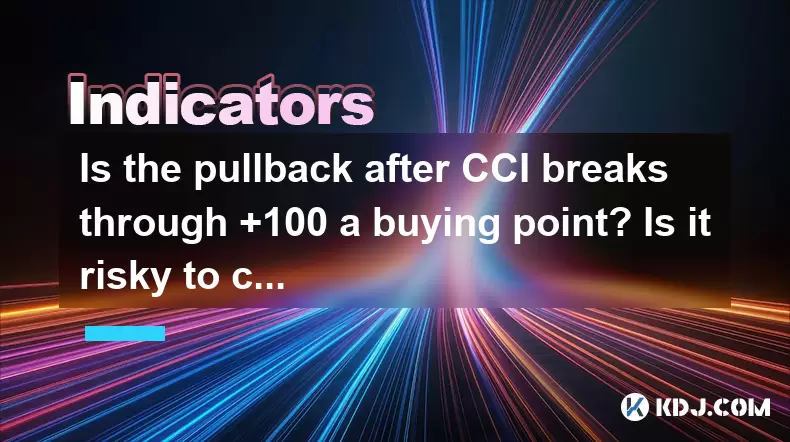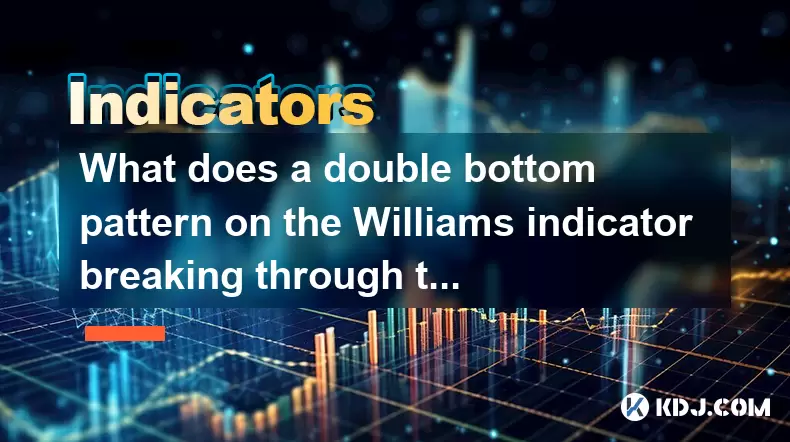-
 Bitcoin
Bitcoin $116400
-0.36% -
 Ethereum
Ethereum $4033
3.40% -
 XRP
XRP $3.302
-1.26% -
 Tether USDt
Tether USDt $1.000
-0.02% -
 BNB
BNB $796.1
1.67% -
 Solana
Solana $177.8
1.89% -
 USDC
USDC $0.9999
0.00% -
 Dogecoin
Dogecoin $0.2314
4.09% -
 TRON
TRON $0.3381
0.14% -
 Cardano
Cardano $0.7989
1.22% -
 Stellar
Stellar $0.4496
-1.84% -
 Chainlink
Chainlink $20.42
9.42% -
 Hyperliquid
Hyperliquid $41.17
0.88% -
 Sui
Sui $3.914
3.77% -
 Bitcoin Cash
Bitcoin Cash $584.7
1.52% -
 Hedera
Hedera $0.2632
-0.54% -
 Avalanche
Avalanche $24.09
3.40% -
 Ethena USDe
Ethena USDe $1.001
-0.02% -
 Litecoin
Litecoin $123.2
1.33% -
 Toncoin
Toncoin $3.318
-0.04% -
 UNUS SED LEO
UNUS SED LEO $8.984
-0.05% -
 Shiba Inu
Shiba Inu $0.00001323
2.85% -
 Uniswap
Uniswap $10.90
4.41% -
 Polkadot
Polkadot $3.999
3.34% -
 Dai
Dai $1.000
0.01% -
 Cronos
Cronos $0.1630
9.64% -
 Bitget Token
Bitget Token $4.484
0.82% -
 Monero
Monero $272.4
2.44% -
 Pepe
Pepe $0.00001173
6.03% -
 Aave
Aave $290.8
2.88%
Is the pullback after CCI breaks through +100 a buying point? Is it risky to chase high?
CCI breaks above +100 signal overbought conditions; traders watch for pullbacks as buying opportunities, assessing risk-reward ratios carefully.
Jun 02, 2025 at 12:36 pm

Understanding the CCI Indicator
The Commodity Channel Index (CCI) is a versatile indicator used by traders to identify potential buying and selling opportunities in the market. Developed by Donald Lambert, the CCI measures the deviation of an asset's price from its statistical mean. The indicator oscillates above and below zero, with readings above +100 typically considered overbought and readings below -100 considered oversold. Traders often use these levels to gauge potential trend reversals or continuations.
The Pullback After CCI Breaks Through +100
When the CCI breaks through the +100 level, it suggests that the asset might be entering an overbought condition. A subsequent pullback—a temporary decline in price—can be seen as a potential buying opportunity for traders who believe the overall trend will continue. The rationale behind this strategy is that the pullback represents a minor correction within a larger bullish trend, providing a more favorable entry point before the price resumes its upward movement.
Analyzing the Risk of Chasing Highs
Chasing highs refers to the practice of buying an asset after it has already experienced significant price increases. This strategy can be risky because it assumes that the asset will continue to rise, despite potentially being overbought. When the CCI is above +100, the risk of a more significant correction or trend reversal increases, making it crucial for traders to assess the overall market context and their risk tolerance before deciding to enter a trade.
Identifying a Buying Point After a Pullback
To determine if a pullback after the CCI breaks through +100 is a viable buying point, traders should consider several factors:
- Trend Confirmation: Ensure that the overall trend remains bullish. Look for higher highs and higher lows in the price action.
- Volume Analysis: Check if the volume supports the continuation of the trend. Increasing volume during pullbacks can indicate strong buying interest.
- Other Indicators: Use additional technical indicators, such as moving averages or the Relative Strength Index (RSI), to confirm the strength of the trend and potential entry points.
Implementing a Trading Strategy
When implementing a trading strategy based on the CCI and pullbacks, follow these steps:
- Monitor the CCI: Keep an eye on the CCI to identify when it breaks through +100.
- Identify the Pullback: Look for a temporary decline in price after the CCI crosses +100.
- Confirm the Trend: Use other technical analysis tools to confirm that the overall trend remains bullish.
- Set Entry and Exit Points: Determine your entry point during the pullback and set clear exit points for both profit-taking and stop-loss orders.
- Manage Risk: Calculate your position size based on your risk tolerance and set appropriate stop-loss levels to manage potential losses.
Assessing the Risk-Reward Ratio
Before entering a trade, it's essential to assess the risk-reward ratio. This involves comparing the potential profit of a trade to the potential loss. A favorable risk-reward ratio can justify the risk of chasing highs, but it should be calculated carefully. For instance, if the potential reward is three times the potential risk, the trade might be considered worthwhile despite the higher risk associated with entering after a CCI break above +100.
Practical Example of a Trading Scenario
Consider a hypothetical scenario where Bitcoin's price has been trending upwards, and the CCI breaks through +100. After a few days, a pullback occurs, and the price drops by 5%. A trader might see this as an opportunity to buy, anticipating that the bullish trend will resume.
- Entry Point: The trader enters the market at the pullback level, say at $45,000.
- Stop-Loss: A stop-loss order is set at $44,000 to limit potential losses.
- Take-Profit: The trader sets a take-profit order at $50,000, anticipating a return to the previous high.
In this scenario, the risk-reward ratio is 2:1, with a potential profit of $5,000 and a potential loss of $1,000. The trader must weigh this against the risk of entering after a CCI break above +100 and the possibility of a more significant correction.
Frequently Asked Questions
Q: How can I differentiate between a temporary pullback and the start of a new downtrend?
A: Differentiating between a temporary pullback and the start of a new downtrend requires careful analysis of multiple factors. Look for signs of trend continuation, such as higher lows and higher highs, and use additional indicators like the Moving Average Convergence Divergence (MACD) or the Average Directional Index (ADX) to confirm the strength of the trend. Volume analysis can also help; increasing volume during pullbacks may indicate strong buying interest, suggesting a continuation of the trend.
Q: What other indicators can I use alongside the CCI to improve my trading strategy?
A: Several indicators can complement the CCI to enhance your trading strategy. The Relative Strength Index (RSI) can help identify overbought and oversold conditions, similar to the CCI. The Moving Average Convergence Divergence (MACD) can provide insights into trend strength and potential reversals. The Bollinger Bands can help gauge volatility and potential breakouts. Using a combination of these indicators can provide a more comprehensive view of market conditions and potential trading opportunities.
Q: How can I manage the psychological aspect of trading, especially when chasing highs?
A: Managing the psychological aspect of trading, particularly when chasing highs, involves maintaining discipline and emotional control. Set clear trading rules and stick to them, regardless of market conditions. Use stop-loss orders to limit potential losses and avoid the emotional decision-making that can lead to chasing highs. Regularly review your trading performance and learn from both successful and unsuccessful trades to improve your strategy over time.
Q: Are there specific time frames that are more suitable for using the CCI and identifying pullbacks?
A: The suitability of time frames for using the CCI and identifying pullbacks depends on your trading style and objectives. Short-term traders might find the CCI more effective on shorter time frames, such as 15-minute or hourly charts, to capture quick pullbacks and trend continuations. Long-term traders may prefer daily or weekly charts to identify more significant trends and pullbacks. Experiment with different time frames to find what works best for your trading strategy and risk tolerance.
Disclaimer:info@kdj.com
The information provided is not trading advice. kdj.com does not assume any responsibility for any investments made based on the information provided in this article. Cryptocurrencies are highly volatile and it is highly recommended that you invest with caution after thorough research!
If you believe that the content used on this website infringes your copyright, please contact us immediately (info@kdj.com) and we will delete it promptly.
- HAT Token Mania: Price Surges, Crypto Auctions, and Meme Coin Mayhem
- 2025-08-09 11:10:11
- Undervalued Cryptos Primed for a 2025 Takeoff: MAGACOIN, TRX, and SUI Lead the Pack
- 2025-08-09 11:10:11
- Bitcoin Goes to Harvard: Ivy League Embraces Digital Assets
- 2025-08-09 10:50:12
- Bitcoin, BlockDAG, and Toncoin: Decoding the Crypto Buzz in NYC
- 2025-08-09 11:30:11
- XRP, Pi Network, and Binance Listing Buzz: What's the Hype?
- 2025-08-09 11:30:11
- Arctic Pablo Coin: The Meme Coin Presale Promising High ROI in Q3 2025
- 2025-08-09 10:50:12
Related knowledge

What does it mean when the Triple Moving Average (TRIX) turns downward but the price doesn't fall?
Aug 09,2025 at 12:42pm
Understanding the Triple Moving Average (TRIX) IndicatorThe Triple Moving Average, commonly known as TRIX, is a momentum oscillator designed to filter...

What does it mean when the Williams' oscillator repeatedly hits bottoms but fails to rebound?
Aug 09,2025 at 09:28am
Understanding the Williams %R OscillatorThe Williams %R oscillator, developed by Larry Williams, is a momentum indicator used in technical analysis to...

What does a double bottom pattern on the Williams indicator breaking through the 50-day midline indicate?
Aug 09,2025 at 10:56am
Understanding the Williams %R IndicatorThe Williams %R indicator, developed by Larry Williams, is a momentum oscillator that measures overbought and o...

What does it mean when the MACD-histogram turns from green to red but the DIF line fails to form a golden cross?
Aug 09,2025 at 10:15am
Understanding the MACD and Its ComponentsThe MACD (Moving Average Convergence Divergence) is a widely used technical analysis tool in the cryptocurren...

When the J line in the KDJ indicator suddenly turns downward after being continuously overbought, does it indicate a top?
Aug 09,2025 at 06:35am
Understanding the KDJ Indicator and Its ComponentsThe KDJ indicator is a momentum oscillator widely used in cryptocurrency technical analysis to ident...

What does it mean when the TRIX indicator suddenly diverges downward after a long period of convergence?
Aug 09,2025 at 12:56am
Understanding the TRIX Indicator in Cryptocurrency TradingThe TRIX indicator, or Triple Exponential Average, is a momentum oscillator used in technica...

What does it mean when the Triple Moving Average (TRIX) turns downward but the price doesn't fall?
Aug 09,2025 at 12:42pm
Understanding the Triple Moving Average (TRIX) IndicatorThe Triple Moving Average, commonly known as TRIX, is a momentum oscillator designed to filter...

What does it mean when the Williams' oscillator repeatedly hits bottoms but fails to rebound?
Aug 09,2025 at 09:28am
Understanding the Williams %R OscillatorThe Williams %R oscillator, developed by Larry Williams, is a momentum indicator used in technical analysis to...

What does a double bottom pattern on the Williams indicator breaking through the 50-day midline indicate?
Aug 09,2025 at 10:56am
Understanding the Williams %R IndicatorThe Williams %R indicator, developed by Larry Williams, is a momentum oscillator that measures overbought and o...

What does it mean when the MACD-histogram turns from green to red but the DIF line fails to form a golden cross?
Aug 09,2025 at 10:15am
Understanding the MACD and Its ComponentsThe MACD (Moving Average Convergence Divergence) is a widely used technical analysis tool in the cryptocurren...

When the J line in the KDJ indicator suddenly turns downward after being continuously overbought, does it indicate a top?
Aug 09,2025 at 06:35am
Understanding the KDJ Indicator and Its ComponentsThe KDJ indicator is a momentum oscillator widely used in cryptocurrency technical analysis to ident...

What does it mean when the TRIX indicator suddenly diverges downward after a long period of convergence?
Aug 09,2025 at 12:56am
Understanding the TRIX Indicator in Cryptocurrency TradingThe TRIX indicator, or Triple Exponential Average, is a momentum oscillator used in technica...
See all articles

























































































